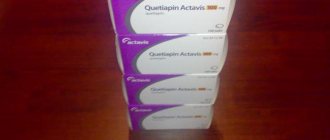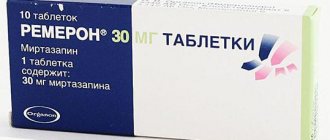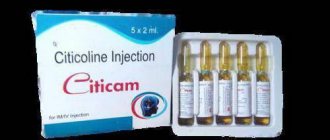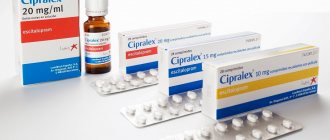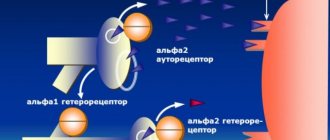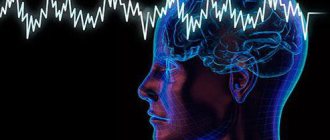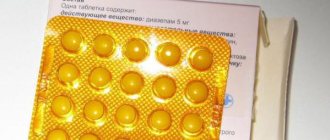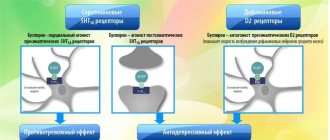Composition, description, form
In what form is the medicine "Ginos" sold? Instructions for use, consumer reviews report that this product is produced in the form of brick-red, round and biconvex tablets, coated. A cross-section of the specimen shows two different layers.
What does the medicine "Ginos" contain? The instructions for use state that the main substance of this medicine is the dry extract of ginkgo biloba leaves. It should also be noted that the total flavonoid content in this product is 24%.
In addition to the main component, this drug also includes additional ingredients in the form of lactose, polyvinylpyrrolidone (povidone), corn starch, sodium carboxymethyl starch (Primogel), magnesium stearate and colloidal silicon dioxide (that is, Aerosil).
As for the shell, it contains only Opadry II.
The drug "Ginos", the instructions for use of which are stored in a pack of cardboard, is sold in contour cells or dark glass jars.
Release form and composition
The dosage form of Ginos is round, biconvex, film-coated tablets of brick-red color.
The drug contains 40 mg of dry extract of ginkgo biloba leaves (24% of which is the sum of flavonoids).
Auxiliary components used in the production of tablets are sodium carboxymethyl starch, colloidal silicon dioxide, corn starch, magnesium stearate, lactose, polyvinylpyrrolidone.
The shell is made of Opadry II, which contains partially hydrolyzed polyvinyl alcohol, macrogol, talc, titanium dioxide.
Ginos tablets are sold in 10 pcs. in blister packs and 30 pcs. in dark glass jars.
Pharmacology of the drug
What is the medicine "Ginos" (tablets)? The instructions for use claim that this is a herbal medicine that improves peripheral and cerebral circulation.
What determines the effectiveness of this drug? Its effect on the human body is associated with the biologically active substances included in its composition. Ginkgo biloba extract, which has been standardized to contain 2.4 mg of terpene lactones and 9.6 mg of ginkgo flavone glycosides, helps increase the elasticity and strengthening of vascular walls, as well as improve the rheological properties of the blood. This effect of the drug leads to improved microcirculation, which ultimately increases the supply of peripheral tissues and the brain with glucose and oxygen. It should also be noted that this drug has a cerebroprotective effect. It reduces tissue swelling and reduces the permeability of vascular walls.
Pharmacological action of Ginos
Like other drugs belonging to the pharmacological group of psychoanaleptics, Ginos has a stimulating effect on the activity of the central nervous system, affecting mainly the sphere of higher nervous activity.
The basis of the medicine is an extract of ginkgo leaves, a relict tree whose history goes back more than 200 million years: imprints of this plant were discovered by scientists on stone finds dating back to the Cretaceous and Jurassic periods. The first mentions of the medicinal properties of ginkgo have survived to this day in manuscripts that are more than five thousand years old.
And modern technologies, which have made it possible to make a detailed analysis of the chemical composition and biological effect of the components of the leaves of this tree, have once again confirmed that they have a truly unique composition. The healing properties of Ginkgo biloba, which is part of Ginos, are explained by the content of more than forty different biologically active substances in its leaves.
Among other substances in ginkgo leaves and, accordingly, in the preparation Ginos, there are:
- Flavone glycosides with P-vitamin activity (including kaempferol, quercetin and ginkgolide), the action of which is aimed at reducing the permeability of vascular walls and capillary fragility, lowering blood pressure, protecting against the oxidation of ascorbic acid;
- Terpene di- and trilactones found exclusively in the ginkgo tree - bilobalide A and ginkgolides A, B, C and J, which have antioxidant and anti-ischemic activity (primarily in relation to the brain);
- Organic, ginkgolic and amino acids;
- Wax;
- Steroids;
- Essential oils;
- Alkaloids;
- Vitamins;
- Micro- and macroelements (including copper, iron, manganese, phosphorus, calcium, etc.).
The most valuable qualities of the ginkgo leaf extract contained in the Ginos preparation are such qualities as the ability to:
- Expand the lumens of blood vessels;
- Reduce blood viscosity and prevent blood clots, thereby improving blood flow in the brain, heart, and limbs;
- Reduce the fragility of blood vessels, preventing the occurrence of hemorrhages in the retina and cornea, as well as the development of stroke and heart attack;
- Reduce vascular permeability, thereby providing an anti-edematous effect;
- Slow down the aging process;
- Regulate carbohydrate metabolism processes, increasing insulin synthesis and protecting pancreatic cells;
- Reduce uric acid levels.
In addition, the extract from ginkgo leaves in Ginos, reviews serve as evidence of this, has an antiviral, anti-inflammatory, immunomodulatory and antihistamine effect, acts as a diuretic and antidepressant, helps preserve intelligence, improve the conductivity of nerve impulses and maintain optimal cholesterol levels, provides an antitoxic effect , and also increases the energy capabilities of the body.
The drug improves peripheral and cerebral circulation, has cerebroprotective properties, strengthens the walls of blood vessels and makes them more elastic.
Under the influence of the active substance included in the drug, the properties of the blood and its circulation improve. The brain and peripheral tissues receive more oxygen, the body develops resistance to hypoxia, which prevents the development of toxic and traumatic cerebral edema.
Pharmacokinetics
Ginos tablets are round, coated, color - red with a brick tint.
The dry extract of Ginkgo biloba contains many components, so it is difficult to assess the pharmacokinetics of Ginos.
Herbal product. The action is due to the nature of its influence on metabolic processes in cells, the rheological properties of blood and microcirculation, as well as on the vasomotor reactions of large blood vessels. Improves cerebral circulation and supply of oxygen and glucose to the brain.
It has a vasodilating effect and prevents platelet aggregation. Normalizes metabolic processes and has an antihypoxic effect on tissues. Prevents lipid peroxidation and the formation of free radicals in cell membranes. It has a pronounced anti-edematous effect at the level of the brain and in peripheral tissues. In various pathological conditions, it prevents an increase in the proteolytic activity of serum.
General characteristics of the drug
What else is remarkable about such a product as “Ginos”? Instructions for use indicate that the drug mentioned is capable of normalizing metabolism in cells, inhibiting platelet aggregation and preventing erythrocyte aggregation. In addition, taking the medication in question does not allow the fibrinolytic activity of the blood to increase, as well as the formation of free radicals and fat peroxidation of the cell membrane.
The drug "Ginos" (reviews, analogues will be presented below) is capable of dilating small arteries, regulating the blood flow of blood vessels and increasing the tone of the veins. This remedy also increases the resistance of the human body to hypoxia, including the brain. In addition, its use slows down the development of edema of toxic or traumatic origin.
Pharmacodynamics and pharmacokinetics
Pharmacodynamics
The standardized extract of Ginkgo biloba contains many biologically active substances that help increase elasticity and strengthen the walls of blood vessels, improve the rheological parameters of the blood and, as a result, improve the supply of glucose and oxygen to the brain and tissues and all microcirculation processes, and has a cerebroprotective effect.
Reduces vascular permeability, improves metabolic processes in cellular structures, stops red blood cell aggregation, reduces fibrinolytic activity of the blood, prevents fat peroxidation in the membrane and the formation of free radicals. It has a dose-dependent effect on the vascular system, improves the tone of venous vessels, dilates small arteries and regulates their blood supply. In general, the drug improves the resistance of the body and brain tissue, especially to hypoxia, and prevents the development of cerebral edema of toxic or traumatic origin.
Pharmacokinetics
Due to the multicomponent composition of the extract, there are no pharmacokinetic parameters of the drug.
Indications
What diseases does Ginos treat? Reviews from experts report that this remedy is very effective for:
- disorders of microcirculation and peripheral blood circulation (including arteriopathy of the legs), Raynaud's syndrome;
- dyscirculatory encephalopathy of various origins (including stroke, traumatic brain injury, old age), manifested by the following symptoms: memory impairment, decreased attention, feelings of fear and anxiety, impaired mental abilities, sleep disturbance;
- neurosensory disorders, which are manifested by tinnitus, dizziness and unsteady gait.
Description and instructions
Ginos is a medicine based on herbal components and has an angioprotective pharmacological effect.
Such an active component in the composition of ginos is the dry extract of ginkgo biloba leaves; excipients - Aerosil (colloidal silicon dioxide), magnesium stearate, Primogel (sodium carboxymethyl starch), povidone (polyvinylpyrrolidone), corn starch and lactose (milk sugar). The leaf extract of the ginkgo biloba plant, in turn, contains active substances (forty milligrams of the extract contains almost nine and a half and two and a half milligrams of ginkgoflavonoglycosides and terpene lactones, respectively), which help to increase and strengthen vascular walls, improve the rheological properties of blood, which leads to normalization of microcirculation, supply of peripheral tissues, as well as the brain, with glucose and oxygen. Gynos has a cerebroprotective effect, reduces the permeability of vascular walls, producing an anti-edematous effect both in the periphery and in relation to the brain. The drug inhibits platelet activation factors, inhibits erythrocyte aggregation and increased fibrinolytic activity of the blood, and also normalizes metabolism in cells. Prevents the development of lipid peroxidation of cell membranes and the production of free radicals. Ginos helps regulate blood supply to blood vessels, increase the tone of veins, dilate small arteries, and have a dose-dependent regulatory effect on the vascular system. Inhibits the development of toxic and traumatic cerebral edema, increases the body's resistance (both as a whole and from the brain tissue, which is most pronounced) to hypoxia. The drug Ginos is available in the form of film-coated tablets for oral administration containing forty milligrams of the active ingredient, ten pieces in a blister, three or nine blisters in a cardboard package; or thirty pieces in orange glass jars, one jar in a cardboard package. The shelf life of Ginos is two years, the drug is available with a prescription.
Indications for use
The drug Ginos is recommended for use in the following cases:
- with dizziness, unsteady gait, ringing in the ears, neurosensory disorders;
- with Raynaud's syndrome, microcirculation and peripheral circulation disorders, arteriopathy of the lower extremities;
- with discirculatory encephalopathy (old age, traumatic brain injury, stroke), which manifests itself in the form of symptoms such as sleep disturbances, tinnitus, dizziness, anxiety, decreased intellectual abilities, weakened memory, decreased attention.
Rules and methods of application
The drug Ginos is taken orally, regardless of meals, in the evening, morning and afternoon. The tablets are swallowed, not chewed or crushed, and washed down with small amounts of water. The dosage is prescribed by the attending physician, otherwise the following instructions should be followed:
- for neurosensory disorders, take one tablet three times a day. The duration of the course of therapy is from six to eight weeks;
- if peripheral circulation is impaired, take one tablet three times a day. The duration of the course of therapy is from six to eight weeks;
- for the symptomatic treatment of cerebral circulatory disorders, take one to two tablets three times a day. The duration of the course of therapy should be at least eight weeks.
The course of treatment should be repeated after the recommendation of the attending physician. If the medication was taken incorrectly (the drug was taken in smaller dosages or with a lower frequency of repetitions), the next dose, etc. carried out exactly as indicated in the above instructions without independent changes.
Contraindications for use
Ginos is not recommended for use in the following cases:
- with erosive colitis;
- with ulcerative lesions of the duodenum and stomach at the stage of exacerbation of such diseases;
- with hypersensitivity to the extract of the ginkgo biloba plant and to all other components of the drug Ginos;
- for children under twelve years of age;
- for women during pregnancy and breastfeeding.
Carefully
- with arterial hypotension;
- in acute cerebral circulatory disorders.
Side effects
When using the drug Ginos, side effects are possible in the form of headaches, gastrointestinal disorders (dyspepsia), allergic reactions (itching, skin rash), and decreased blood clotting. In some cases, internal bleeding cannot be ruled out with long-term use of drugs containing ginkgo biloba.
Prohibitions for use
The following conditions are contraindications to taking the medication in question:
- erosive gastritis;
- decreased blood clotting;
- pregnancy period;
- ulcer of the gastrointestinal tract in the acute phase;
- feeding period;
- age of children under 12 years old;
- hypersensitivity to drug substances.
This drug is prescribed with extreme caution for arterial hypotension and acute cerebrovascular accidents.
Treatment regimen and dosage
Data on tablet overdose
as of today no.
It is recommended to take the medication orally. It can be taken in the morning, lunch and evening. In this case, taking the medicine does not depend on eating food.
The tablets should be swallowed whole, without chewing. To make them easier to swallow, you need to drink enough water.
For symptomatic therapeutic treatment of various cerebrovascular disorders, it is necessary to take 1-2 tablets three times a day. The reception period lasts from 8 weeks or more.
During the treatment of peripheral circulatory disorders and neurosensory type disorders, you should take 1 tablet 3 times a day. The period of therapeutic treatment ranges from 6 weeks to 2 months.
According to the doctor's recommendations, the dosage level of the medication can be adjusted. If necessary, courses of taking the drug can be repeated.
If a medication was missed or taken in smaller quantities, then the subsequent medication is taken as usual without changing the dosage.
The drug is contraindicated to take during pregnancy, because the components may have a harmful effect on the development of the child.
It is not recommended to take during breastfeeding; the constituent components end up in milk.
When taking the medicine, the following conditions must be taken into account:
- It is not recommended to exceed the recommended dosage of the medication;
- improvement is usually observed after a month of therapeutic treatment;
- While taking the medicine, it is prohibited to drink alcohol-containing drinks.
Medicine "Ginos": instructions for use
Most often, the drug in question is prescribed for the treatment of (symptomatic) cerebrovascular disorders. With this diagnosis, it is recommended to take 1-2 tablets three times a day. The duration of therapy is at least 8 weeks.
In case of impaired blood circulation (peripheral), this medication is prescribed 1 tablet with the same frequency for 6-8 weeks.
For neurosensory disorders, the mentioned medicine is taken in the same way, for 6-8 weeks. If necessary, the course of therapy can be repeated, but only after consultation with a doctor.
How should I take Ginos film-coated tablets correctly? It is best to divide the dosage recommended by your doctor into three doses (morning, afternoon and before bed). The medicine should be taken regardless of meals, swallowed whole and washed down with a small amount of liquid.
If a dose of the drug was missed or an insufficient dosage was taken, then subsequent use of the medication should occur without any changes.
Ginos
Release form, composition and pack
The tablets are brick-red, round, biconvex; On a cross section, two layers are visible.
1 tab.
- dry extract of ginkgo biloba leaves 40 mg.
- content of total flavonoids 24%
Excipients: lactose, corn starch, polyvinylpyrrolidone (povidone), sodium carboxymethyl starch (Primogel), magnesium stearate, colloidal silicon dioxide (Aerosil).
Shell composition: Opadry II.
Clinical and pharmacological group: A drug that improves cerebral and peripheral blood circulation.
pharmachologic effect
A herbal preparation that improves cerebral and peripheral blood circulation. Biologically active substances of ginkgo biloba extract (standardized to contain 9.6 mg of ginkgoflavonoglycosides and 2.4 mg of terpene lactones / ginkgolides and bilobalides / in 40 mg of extract) help strengthen and increase the elasticity of the vascular wall, improve the rheological properties of the blood, which leads to improved microcirculation, increases brain supply and peripheral tissues with oxygen and glucose. The drug improves cerebral circulation and has cerebroprotective properties. Reduces the permeability of the vascular wall and reduces tissue swelling.
Normalizes metabolism in cells, prevents erythrocyte aggregation, inhibits platelet aggregation. Prevents increased fibrinolytic activity of the blood, the formation of free radicals and lipid peroxidation of cell membranes. Dilates small arteries, increases the tone of veins, regulates blood supply to blood vessels. Increases the body's resistance to hypoxia, especially brain tissue, inhibits the development of traumatic or toxic cerebral edema.
Pharmacokinetics
The pharmacokinetic parameters of Ginkgo biloba extract are difficult to assess due to the multicomponent composition of the extract.
Indications
- dyscirculatory encephalopathy of various etiologies (stroke, traumatic brain injury, old age), manifested by the following symptoms: decreased attention, memory impairment, impaired intellectual abilities, anxiety, fear, sleep disturbances;
- disorders of peripheral circulation and microcirculation (including arteriopathy of the lower extremities), Raynaud's syndrome;
- neurosensory disorders, manifested by dizziness, tinnitus, unsteady gait.
Dosage regimen
For symptomatic treatment of cerebrovascular disorders, the product is prescribed in 1-2 tablets. 3 Duration of therapy is at least 8 weeks.
For peripheral circulation disorders, 1 tablet 3 Duration of therapy - 6-8 weeks.
For neurosensory disorders, the product is prescribed 1 tablet 3. The duration of the course of therapy is 6-8 weeks.
If necessary, repeated courses of therapy may be prescribed.
Film-coated tablets should be taken in the morning, afternoon and evening, regardless of meals, swallowed whole, without chewing, with a small amount of water.
If a pill was missed or an insufficient dose was taken, the next dose is taken as indicated, without any changes.
Side effect
From the side of the central nervous system: rarely - headache.
From the digestive system: rarely - symptoms of dyspepsia.
Allergic reactions: possible skin rash, itching.
Other: decreased blood clotting.
Contraindications
- decreased blood clotting;
- peptic ulcer of the stomach and duodenum in the acute phase;
- erosive gastritis;
- children under 12 years of age;
- pregnancy;
- lactation (breastfeeding);
- high sensitivity to product components.
Prescribe with caution for acute cerebrovascular accidents and arterial hypotension.
Pregnancy and lactation
The drug is contraindicated for use during pregnancy and lactation (breastfeeding).
special instructions
Do not exceed recommended doses of the product.
Improvement is usually observed after 1 month of therapy.
You should not drink alcohol while using the product.
Overdose
To date, no cases of overdose have been reported.
Drug interactions
The use of the product simultaneously with acetylsalicylic acid and oral anticoagulants is not recommended.
Storage conditions and periods
The drug should be stored in a dry place, protected from light and out of reach of children, at a temperature not exceeding 25°C.
Shelf life: 2 years.
Attention! Before using the drug "Ginos" you should consult your doctor. The instructions are provided solely for familiarization with “ Ginos ”.
Side actions
The medication in question is tolerated quite well by patients. However, in some cases, this drug may still contribute to the development of side effects. Among them we can particularly highlight the following:
- Digestive tract: symptoms of dyspepsia (occur very rarely).
- CNS: headaches (extremely rare).
- Allergic reactions: itchy skin, as well as skin rash (sometimes).
- Others: decreased blood clotting.
Side effects
According to reviews of people who have taken Ginos, in the vast majority of cases this drug is well tolerated and does not have any serious side effects.
If you have hypersensitivity or intolerance to ginkgo biloba or any auxiliary component of the drug, allergic reactions may develop.
In some cases, patients complain of headaches, and sometimes there is a decrease in blood clotting.
The digestive system may react to taking the medication with dyspeptic disorders.
In addition, there are isolated reports of internal bleeding that developed after long-term use of drugs made from ginkgo biloba.
Overdose and drug interactions
To date, no cases of overdose with the drug in question have been reported. However, experts say that taking this medicine at your own discretion and in high doses is not recommended. You can use the medication to treat certain diseases only after consulting a doctor.
As for drug interactions, the instructions also do not provide any information on this matter. However, doctors report that the use of this medication together with oral anticoagulants and acetylsalicylic acid is unacceptable.
Special Information
What should the patient be warned about before prescribing the drug in question? Experts say that, despite the lack of information about overdoses of this drug, it is prohibited to take it in large quantities.
According to consumers, after using this drug, improvement in their condition is usually observed after 1 month.
During therapy with Ginos, it is strictly forbidden to take alcohol and other alcohol-containing products and products.
Reviews about the drug
The drug "Ginos", analogues of which were indicated above, has established itself as a very effective and efficient drug. A large number of consumers share a similar opinion. According to them, taking this medication helps improve microcirculation and blood circulation (peripheral). This drug also treats neurosensory disorders well, or more precisely such manifestations as tinnitus, unsteady gait and dizziness.
As for specialists, they also speak positively about this drug. Most often, doctors prescribe Ginos for symptoms such as decreased attention, impaired mental abilities, memory impairment, sleep disturbances, feelings of fear and anxiety. After completing the course of therapy, all of the listed symptoms are usually completely eliminated.

